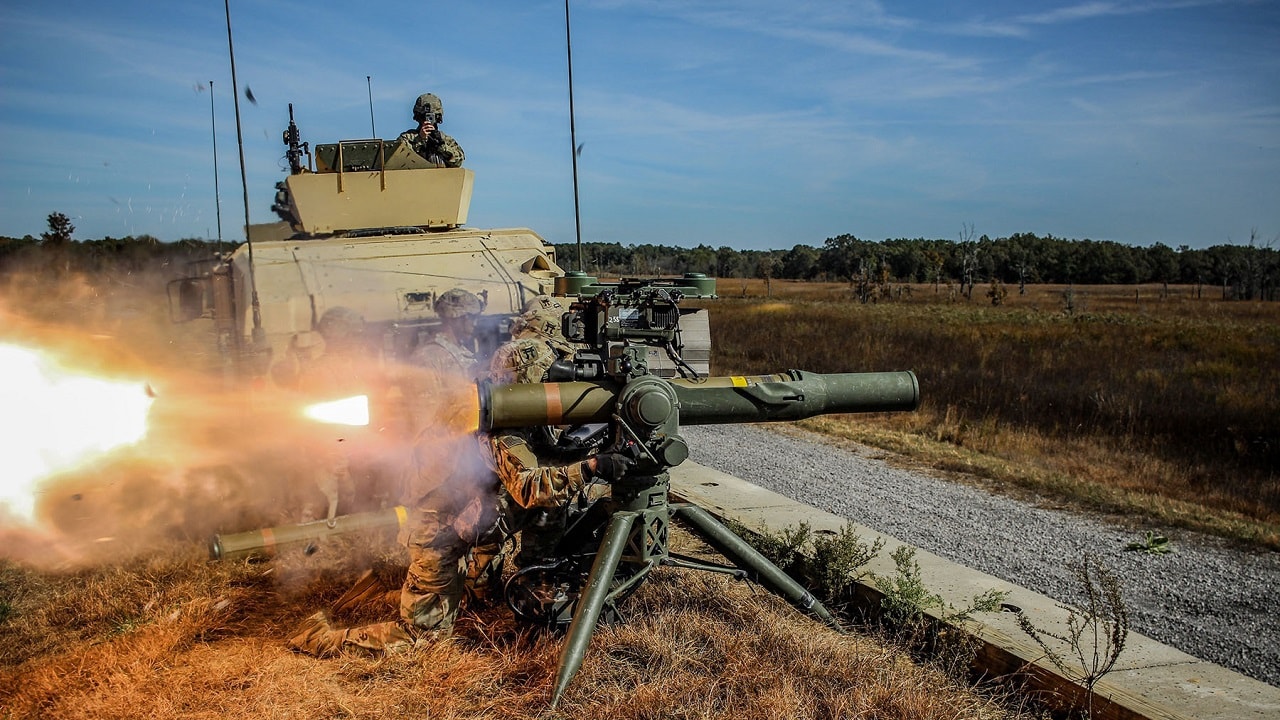Meet the TOW Missile: Earlier in March, CNN reported that Russia has begun sending Iran some of the American-made weaponry captured in Ukraine to undergo reverse engineering. Iran has a solid track record of deconstructing foreign weapons and equipment and rebranding it as its own domestic product.
Perhaps one of Tehran’s first reverse-engineered products was the Toophon anti-tank guided missile, which is largely accepted to be a makeshift version of the U.S. BGM-71 TOW missile.
The Tube-launched, Optically tracked, Wire-guided anti-tank missile system has remained in service with the U.S. armed forces since 1970. The powerful system has even made its way to the ongoing conflict in Ukraine.
The Origin Story of the BGM-71 TOW
Western armies began conceptualizing advanced variants of wire-guided missiles during World War II. The German Army conceptualized a modified version of the Ruhrstahl X-4 missile around this time, resulting in the creation of the X-7 model.
While the X-7 did not come to fruition until the post-WWII era, foreign militaries immediately became interested in cutting-edge design.
Around this time, the U.S. Army began work on its own basic version of the X-7 concept, which the BGM-71 TOW was eventually derived from. By 1972, U.S. armed forces first utilized the American-made TOW missile in combat during the Vietnam War.
The anti-tank system’s success in busting North Vietnamese tanks led the missile to be incorporated into several different vehicle platforms over the years, including COBRA helicopters, M2/M3 Bradley and USMC’s LAV-AT.
Since the TOW missile’s initial introduction to service in 1970, it has undergone several significant facelifts. In addition to an extended probe for a greater standoff, an enhanced flight motor, and hardware improvements, the TOW now sports a wireless guidance system.
Raytheon Missile & Defense now produces the anti-tank missile, labeling the weapon as “the premier long-range, heavy assault-precision anti-armor, anti-fortification and anti-amphibious landing weapon system used throughout the world today,” adding that the “The TOW missile enables ground forces to achieve overmatch against adversary armored and wheeled systems, regardless of the environment or conditions.”
The anti-tank missile features line-of-sight guidance under command. Using a two-stage solid propellant rocket motor, the missile is launched after the weapons operator views a spot on the target with a telescopic sight, according to Eurasian Times.
The most advanced version of the TOW missile can strike targets from a distance of 4,500 meters and is frequently used against tanks, bunkers, urban structures, and field fortifications.
These capabilities make the TOW a critical weapon for Ukrainian defenses today.
The TOW missile in Ukraine
Back in March, Ukraine Weapons Tracker tweeted footage depicting an M41A7 TOW HMMWV-mounted ITAS being fired by a Ukrainian soldier. Three photographs show the trajectory of the missile from the second it launches, leaves the turrets, and prepares to come in contact with its target.
#Ukraine: Photos of a Ukrainian soldier firing from a M41A7 TOW HMMWV-mounted ITAS- which allow us to confirm one of the TOW types supplied by the US to Ukraine.
We see a TOW-2B-series missile- a very capable top-attack variant, able to destroy almost any Russian vehicle. pic.twitter.com/QLbtHcXALI
— ???????? Ukraine Weapons Tracker (@UAWeapons) March 20, 2023
An additional post displayed photos of the damage caused in the aftermath of the attack. Since the onset of Russia’s invasion of Ukraine, an influx of Western-made anti-tank missiles has aided Ukraine’s defensive efforts.
Though very old, the TOW missile has proven to be an important asset for Ukraine.
Maya Carlin is a Senior Editor with 19FortyFive. She is also an analyst with the Center for Security Policy and a former Anna Sobol Levy Fellow at IDC Herzliya in Israel. She has by-lines in many publications, including The National Interest, Jerusalem Post, and Times of Israel.

